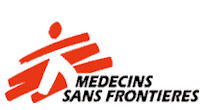 As the International AIDS Society (IAS) Conference takes place in Vancouver, Canada (July 19-22), Helen Bygrave of MSF discusses her frustrations with the lack of implementation of simple, programmatic strategies for improving HIV care.
As the International AIDS Society (IAS) Conference takes place in Vancouver, Canada (July 19-22), Helen Bygrave of MSF discusses her frustrations with the lack of implementation of simple, programmatic strategies for improving HIV care.
My main memory of the last IAS conference that I attended, held in Vienna in 2010, was a resounding standing ovation for a presentation (including this video) by one of my colleagues working in Mozambique. In a situation where antiretroviral therapy (ART) had not been extensively decentralised, and where drug supply limitations meant people had to attend a clinic every month to pick up their drugs, a simple idea had transformed the way that patients received their HIV care. In short, people living near each other had got together and agreed to take it in turns to pick up each other’s drugs. This resulted in less time spent at the clinic and lower transport costs for patients and an immediate reduction in workload for clinic staff.
Simple, no? So why are people living with HIV/AIDS still queuing up all day every month (or couple of months if they are lucky) outside a clinician’s door to pick up their ART? They feel well, their CD4 counts are fine, and some now even know that their viral load is undetectable.
How we deliver ART as a chronic medication has become a hot topic of debate. Examples range from facility-based fast-track through to adherence clubs, community ART groups (CAGS), and, finally, some examples of community-based pharmacies are appearing. These strategies have been variously named alternative-refill strategies, community models of care, and differentiated models of ART delivery. Whatever the title, the strategy must be patient-centred, ie responsive to patients’ needs, and context-adapted – since what might work in a busy clinic in Johannesburg may not work in rural Zimbabwe. My dream is to be able to offer patients a range of options to choose from when collecting their repeat drug refills. Some of the community strategies may even provide opportunities beyond easing drug supply, such as strengthening community engagement with the aim of mobilising local communities, reducing stigma, and enhancing their link with healthcare systems.
In light of the ambitious 90-90-90 targets of UNAIDS (by 2020, 90% of all people living with HIV will know their HIV status, 90% will receive sustained antiretroviral therapy, and 90% will have viral suppression), how we take the issue of ART supply forward is clearly of great importance, but I wonder whether we are overcomplicating the discussion. Starting up models such as adherence clubs and CAGs requires coordination, but once in place these approaches should alleviate workload and provide opportunities for community engagement. And what is difficult about providing a 3-month supply of drugs? It happens in some countries, so why are these systems not shared? And why is there still insistence on patients seeing a clinician for every visit, often just for a few minutes to write a prescription? How can we persuade our systems to delink the need for sick patients to see a clinician from the need for drug collection by healthy individuals? Why not open the pharmacy a bit earlier and later once a week, or possibly one Saturday morning every month? And how about booking all your paediatric patients on the same day each month, so they and their carers automatically have some peer support?
Does any of the above sound like rocket science? Clearly there are some easy changes that most clinic managers would make tomorrow to reduce their workload and, as some have already flagged to us, allow them to spend more time with the patients that actually have clinical needs.
Five years after the video of the ART groups galvanised IAS, there are some great examples of where these strategies have made a difference. One such example from the Western Cape will be presented as a late-breaker this week in Vancouver. But why are such “simple” programmatic strategies, which seem to make both healthcare workers and patients happy, not being implemented in a systematic way across more national programmes?
Some may jump to the lack of funding, but from my viewpoint, funding is not the primary barrier for this issue (although clearly the fight for ongoing funding for commodities and support of community activities still needs to be fought). But on this topic ,whereas all countries receive guidance from WHO on what to do for HIV/AIDS care, there is a clear lack of guidance on how to do it, and in particular on how to do it in a systematic way across whole countries. Hopefully, the 2015 revision of the WHO guidelines will further elaborate programmatic guidance since national decision making on refill strategies needs urgent programmatic support.
So my plea is for us to stop talking and start implementing. If, by IAS 2020, all patients can access a 3-month drug supply, are empowered to manage their disease and thus are seen routinely just once a year, and have a choice of drug refill strategies, we may have reached at least the last two of the 90-90-90 UNAIDS goals. Simple, no?
Helen Bygrave is a UK trained general practitioner. For the past 10 years she has worked for Médecins Sans Frontières (MSF) supporting HIV/TB programmes across Africa and Asia and currently works as one of MSF’s HIV/TB advisors in the Southern Africa Medical Unit.
